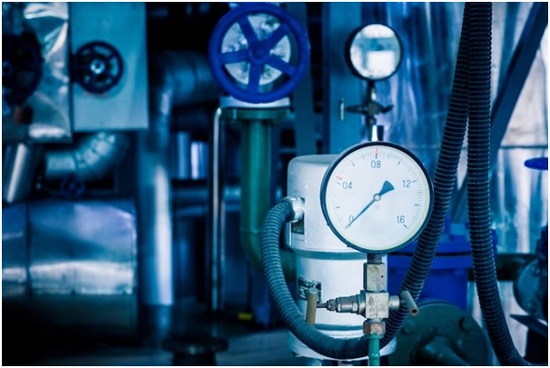Types of Flow Meters

Mechanical Flow Meters
These meters use a moving components arrangement and known liquid volumes to measure the flow of liquid via a series of chambers or gears. The following are four categories into which these meters fall.
Positive Displacement Flow Meter
The counting or isolation of specific quantities of a gas or liquid is how DP (positive displacement) flow meters operate. By counting the number of approved isolated volumes, the flow may be measured. Each meter has a unique mechanism to count liquid volumes over a predetermined number of cycles. These meters provide excellent accuracy and strong repeatability, and they may be installed on straight-up and downstream pipes without the requirement for a power source.
Mass Flow Meter
By measuring the volume of the material passing through them, this kind of meter is utilized to provide the user with an anticipated flow rate. These weight-oriented meters are utilized in areas like the chemical industry where weight-oriented measurement is necessary.
Differential Pressure Flow Meter
This meter works by partially obstructing the liquid flow in a pipe to produce a difference in static pressure between the upstream & downstream portions of the apparatus. To determine the liquid flow rate, the differential pressure difference may be monitored. Nowadays, 40% of these meters are employed in the measurement of various fluids, including gases and extremely thick liquids. Due to their straightforward form & affordable price, they are quite well-liked.
Electromagnetic Flow Meters
It is a kind of velocity or volumetric flow meter that functions in accordance with Faraday’s law of electromagnetic induction, which states that as a conductor flows through a magnetic field, a voltage will be generated. Only conductive fluids can have their flow rate detected by mag meters.
Velocity Flow Meter
This meter is used to gauge stream velocity and calculate the volumetric flow rate of liquids. When the internal liquid flow is greater, these meters are less sensitive. These meters typically consist of electromagnetic, vortex shedding, paddlewheel, turbine, sonic, or ultrasonic flow meters.
Optical Flow Meter
An optical-type meter is a new advancement in industrial liquid flow monitoring that measures the liquid’s velocity via a pipe. The technology detects the light-diffusion particles carried by the moving liquid by use of two laser beams.
Open Channel Flow Meter
This type of meter is used to gauge liquid flow in a measuring lane that is exposed to the outside environment at one end. This liquid can either be totally exposed to the atmosphere or contained in a closed tube that is only half filled with liquid and can be opened to the atmosphere at the meter’s fitting end.
Flow Meter Application
Accuracy is the primary goal of measuring in the first place. Understanding that the accuracy statement, or accuracy definition, for flow measurement can be expressed in one of two ways—as a percentage of weight or a percentage of the complete scale—is crucial.
Users will experience the same 1% relative inaccuracy at maximum flow with a remark like “1% of full scale.” Naturally, the relative inaccuracy increases and will continue to increase as the distance from the maximum flow increases.
There are several methods, however, repeatability is more crucial depending on the goal of your measurement. For instance, the user could just wish to keep an eye on or control a process. Accuracy is essential when casting a transfer or invoicing, though.
The repeatability statement of the various measuring equipment is often preferable to the accuracy assertions since these many elements are inextricably tied to one another.
It’s crucial to keep in mind that these accuracy claims were created under reference circumstances, which were satisfied in a calibration lab at the flow meter manufacturers in India.
The performance is based on the amount of work put into ensuring that technologies used in labs can be traced to national standards and fulfill the reference requirements.
- These varied uses have led to various distributions of flowmeter technology across a variety of sectors, including oil and gas, maritime, petrochemical power, pulp and paper, food and beverage, waterways, water and mining, and metal.
- For instance, a particularly sanitary flowmeter is needed in the food and beverage industry; abrasive slurries may be used in mining and metal processing; and hydrocarbons play a key role in oil and gas applications.
- The primary goals of flow measurement must be taken into account, notwithstanding the unique needs and particulars.
- It makes up the majority of the market for flow measurement, and three of them have about equal market shares in terms of the total number of flow measurements and smaller technologies.
The major three are Coriolis flowmeter measurement, electromagnetic flow measurement, and differential pressure flow measurement (DP flow). According to several market research, the measuring points for all three technologies are similar.
The other three methods are vortex and swirl flowmeters, variable area meters, and ultrasonic flow measurements. Mechanical meters and thermal mass meters are two examples of additional flowmeters. These many technologies are generally accepted and used.
